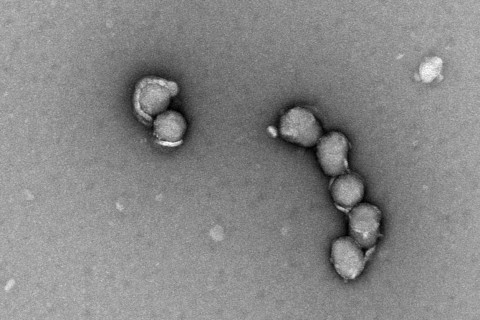The doctoral dissertation in the field of Applied Physics will be examined at the Faculty of Science and Forestry, Kuopio Campus and online.
What is the topic of your doctoral research? Why is it important to study the topic?
The topic of my doctoral research is biomimetic nanoparticles with cell membrane coating for enhanced tumour targeting. Nanoparticles (NPs) have been widely explored for use in biomedical applications, such as drug delivery, bioimaging, and diagnostic sensing. However, NP vectors still face challenges related to their fast clearance from the bloodstream and poor accumulation in target organs.
Recently, significant attention has been directed toward cell membrane (CM)-coated NPs, which is ascribable to their excellent biological properties, including immune evasion, prolonged blood circulation times, and disease-relevant targeting. While biomimetic NPs are promising candidates for targeted delivery, several key issues associated with CM coating technology, such as CM coating integrity, the CM-coated NP structure, and the entire coating procedure, are still not fully understood and explored, which limits the further development of the coating technique in nanomedicine. Therefore, this study focuses on the understanding of CM coating technology with the aim of improving tumour targeting.
What are the key findings or observations of your doctoral research?
The key findings of the present thesis can be summarized in three main points. (1) A fluorescence quenching assay was first developed to determine the integrity of the CM coating. The results of full coating ratios demonstrated that most biomimetic NPs prepared with traditional coating techniques were only partially coated, in contrast to the common assumption that NPs are completely coated. Such partially coated NPs enter the source cancer cells through a cooperative mechanism involving appropriate NP aggregation. (2) The completely smooth shells in the transmission electron microscope (TEM) images of negatively stained CM-coated polymeric NPs were identified to be artifacts, which were produced by the staining itself. (3) The reason for partial CM coating was due to the limited CM fluidity that regulates the final fusion between adjacent CM patches. Based on this discovery, the improvement of the partial coating was achieved by increasing CM fluidity with the introduction of an external phospholipid and the homologous tumour targeting ability was essentially improved in vivo.
How can the results of your doctoral research be utilised in practice?
The outcome of this thesis highlights some of the current limitations of the cell membrane coating technique and it would motivate more studies on how to achieve a full cell membrane coating to improve targeting. The discovery that membrane fluidity is a regulator of fixing the partial coating opens an avenue toward the improvement of partial CM coating. The developed hybrid membrane (HM) coating method will provide new insights into the design of biomimetic NPs as well as active tumour targeting delivery. The results of this thesis also establish guidelines to avoid misinterpreting artifacts as CM coating when examining CM-coated polymeric NPs in the future.
What are the key research methods and materials used in your doctoral research?
To explore the CM coating integrity, I developed a fluorescence quenching assay to calculate the percentage of fully coated NPs. This method was applied to test and compare the ratio of full coating of cell membrane-coated NPs prepared by different synthetic methods. Then, we used dissipative particle dynamics (DPD) simulations to systematically investigate the mechanisms underlying the coating degree-dependent NP-cell interactions. To clarify the actual mechanism underlying the partial coating, we used a coupled Lattice Boltzmann−Phase Field model to study the interaction between CM vesicles and NPs during extrusion. The tumour targeting ability of fixed HM-coated NPs was examined using confocal laser scanning microscopy (CLSM), flow cytometric assay (FCA) and TEM in vitro and a subcutaneous xenograft colon tumour-bearing mouse model in vivo.
Is there something else about your doctoral dissertation you would like to share in the press release?
There are two press releases that reported our published articles, which were included in the doctoral dissertation, article 1 and article 2.
The doctoral dissertation of Lizhi Liu, MSc, entitled Biomimetic nanoparticles with cell membrane coating for enhanced tumour targeting will be examined at the Faculty of Science and Forestry. The opponent will be Professor Twan Lammers, RWTH Aachen University Clinic, Germany, and the custos will be Professor Vesa-Pekka Lehto, University of Eastern Finland. Language of the public defence is English.
For more information, please contact:
Lizhi Liu, [email protected], Twitter: @Lizhi_Chanjuan






